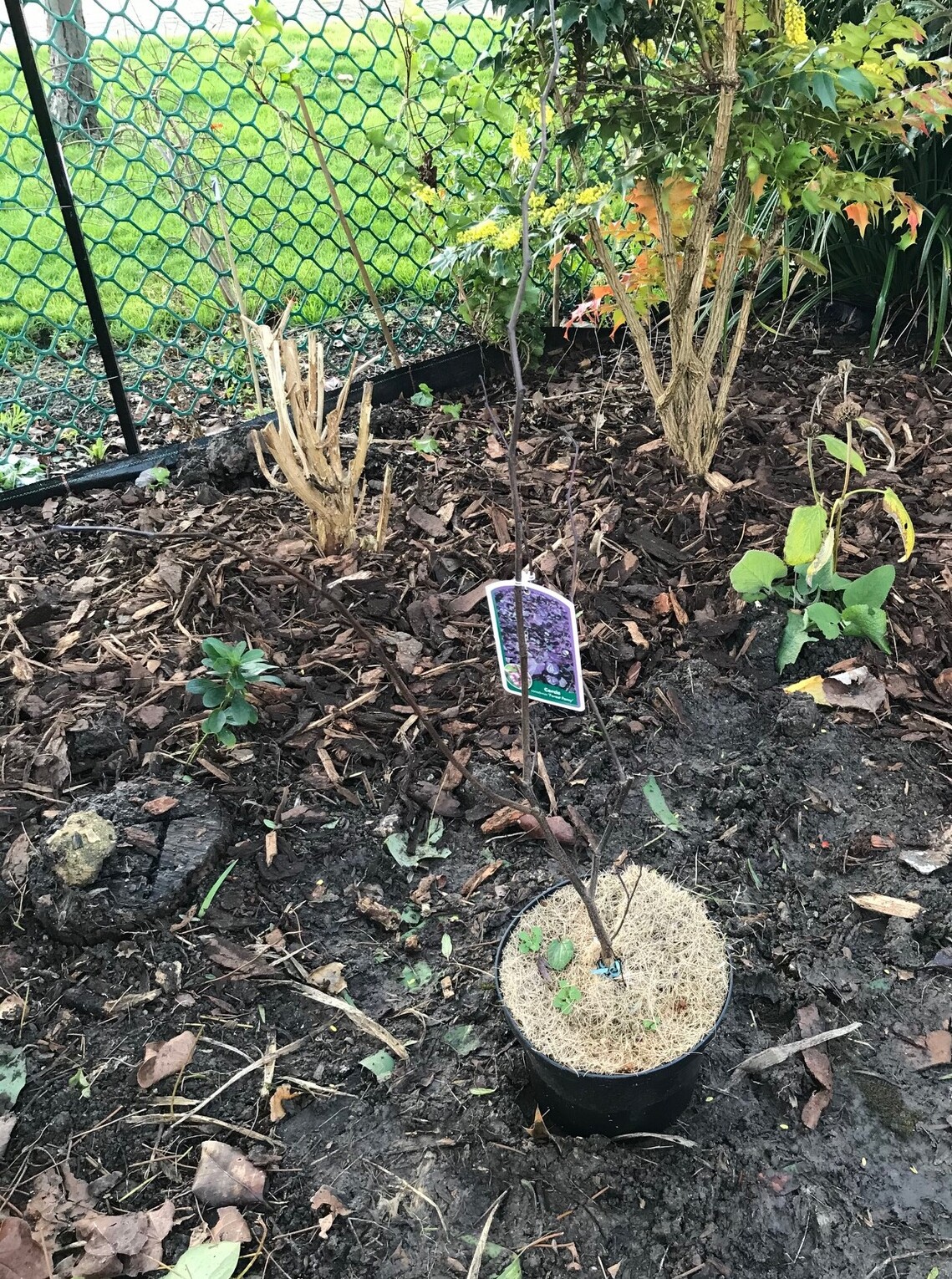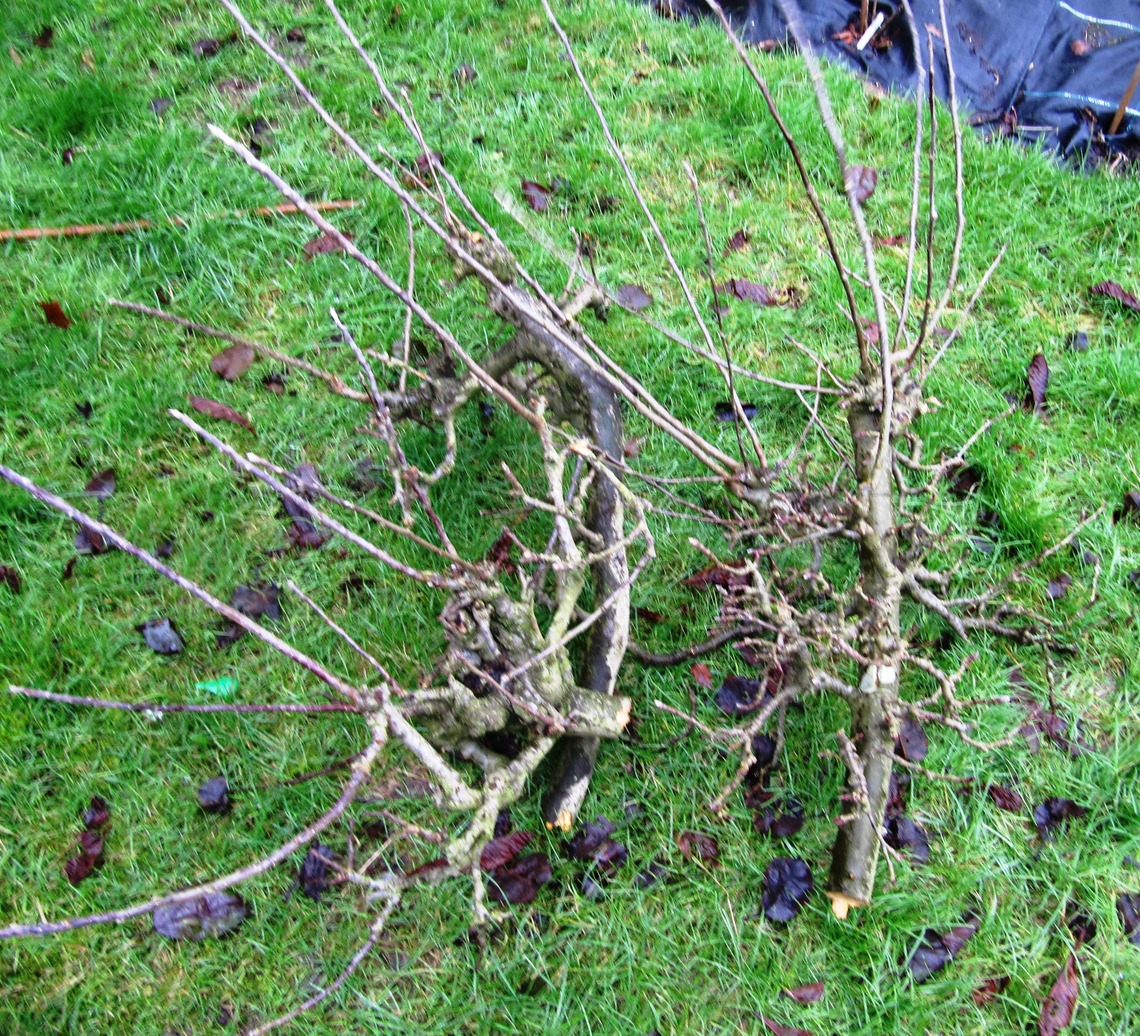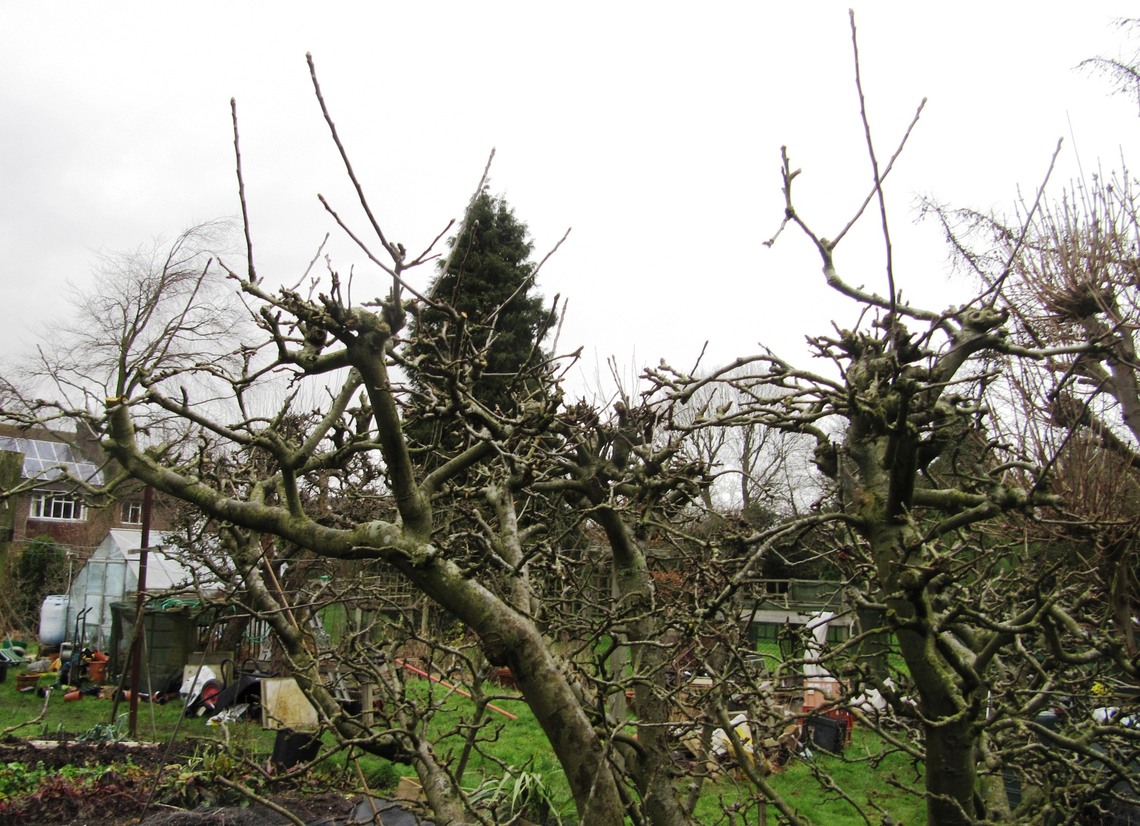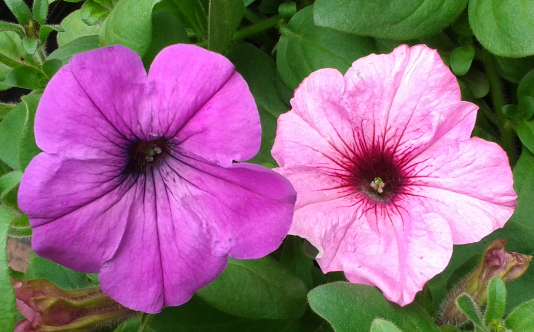If you've got any gardening advice, hints or tips, that you're happy to share with other members, please let us know and we can upload to the website. Please email info.
We understand that you may not want to share your show secrets!
Recommended plants from our March Zoom meeting for containers in your garden
Osmanthus GoshikI
Loropedalen Fire Dance
Phormium Jester
Restio
Libertian
Camellia Sasanqua (winter + perfume)
Astelia Silver spear
Sarcocca - at least 3 varieties all winter flowering (source, J parker)
Ornamental Grasses
Patio Climbing Roses (Susie) – Go to ‘fragrant Rose company’ and read detailed instructions
The following need protection in winter against frost
Aeonium
Mimulus aurantiacus
Ginger Lily
Eucomis – pineapple flower bulbs or seeds from Amazon
Callianthus murielae: Gladiolus callianthus 'Murielae' This plant will provide
nectar and pollen for bees and the many other types of pollinating insects.
Chocolate Cosmos: Cosmos atrosanguineus (source from J parker)
For a North porch
Christmas Box
Box
Yew
Fuchsia
If you want to find out more information about one of the above plants, enter the plant name into the RHS's plant finder search page - Find advice & tips on garden & indoor plants | Plant finder & selector / RHS Gardening
End of article
******************************************************************************************************************************************
March 2021 Notes for members
Ralph Weston
March is probably the busiest month in the year.
Plants, trees, bushes etc are waking up and if you have not completed your digging of the veg patch or pruning, they are now urgent jobs. This year the weather has not been kind to us gardeners. Read the guidance below with an eye on the cold weather
- Plant shallots, onion sets and early potatoes. Reg Price always told me to plant shallots on the shortest day and harvest on the longest day. I planted my shallots in pots early in January in the greenhouse. They now have strong roots to be planted out when the ground is warm enough. I have only just got my seed potatoes, so do not plant them until they have chitted. You can put some in a large pot or bag if you do not have the ground to grow potatoes. However, remember as they grow to give them plenty of water.
- Lift and divide overgrown clumps of perennials. Dividing gives them more light and air and you a second plant. However, the Society has a plant sale in April so keep your spare plants for that. Dividing up clumps can be brutal using a big spade or fork but it will not hurt the plant.
- Protect new shoots from slugs. Slug pellets can be harmful to wildlife. I use “Slug Clear” liquid concentrate but only on flowers and ornamental plants outdoors. DO NOT USE ON EDIBLE CROPS.
- Top dress containers with fresh compost and apply either a general fertilizer or a high potash fertilizer such as rose food. It is important that daffodils growing in pots are fed weekly so that they will grow large bulbs for next year and feeding should continue even after they have flowered.
- Cut back hard, Cornus (dogwood) and Salix (willow) grown for their colourful winter stems.
- Prune bush and climbing roses towards the end of the month. You can prune climbing roses earlier. Prune bush roses by cutting out any middle growth so as to open the rose up, again for light and air. Give them a boost of rose fertilizer and a mulch to get them springing into life with new shoots. You must be brutal, but you will get better plants and flowers in the end. They say you should get your best enemy to prune your roses.
- Hoe and mulch the dreaded weeds to keep them under control. WE seem to have some real nasties around here that shoot up from underground bulbs. These have to be dug out.
- The lawn. As soon as we get a warm dry day everybody is out mowing their lawns. Try and hold off and let the grass grow after being battered by snow and frost. It will recover better and not be overcome by moss. We all have moss because we live in the valley that is naturally damp. You can control it by watering it with Iron Sulphate which you can get from the Aylesbury Gardening Society. It turns the moss black and you then have to rake it off. When you do cut your grass, do not cut it too short! Most people do and when the dry weather comes your lawn will turn brown and let in the moss.
- Trees and shrubs. Plant deciduous hedging plants, shrubs, trees and climbers. Stakes and rabbit guards should be put in place at the time of planting trees, to prevent damage to the root ball or bark.
This is the best month for planting roses in heavy soils or in cold areas. Avoid planting in areas where roses were previously grown, otherwise new introductions may suffer from replant disease.
Towards the end of the month, you can plant evergreen shrubs and trees left unplanted since the autumn. Try and grow at least one tree in your garden. Not only is it a benifit to you and the neighbourhood but will help control Global Warming. Obviously, select a tree that suits your garden and avoid trees such a willow and leylandii which will smother you and your neighbour.
10.You can now plant summer flowering bulbs. If you plant Gladioli, remember to provide a stake for the stem to be tied up to.
End of article
******************************************************************************************************************************************
Super plant: Cotoneaster franchetii
A new RHS science paper revealed that the bushy, hairy-leafed Cotoneaster franchetii is the latest ‘super plant’ to help boost the environment and improve human health.
It is at least 20% more effective than other shrubs at soaking up pollution by trapping harmful airborne particles.
February 2021 Notes for members
Ralph Weston
February is a key time to get ready for the growing season. Spring is within touching distance, and by the end of the month we'll begin to get a little more daylight. As the soil begins to warm, it's a great time to dig it over and plan out your planting projects, to ensure you have all the seeds, bulbs and compost you need.
- Prune Autumn flowering raspberries** by cutting them down to the ground. I have gone over to growing these autumn varieties because by cutting them to the ground, it keeps them tidier than just trying to cut out last year’s stems and having to tie in the ones to fruit this year. The Autumn raspberries are not much later than the standard summer ones and they will go on to fruit well into the Autumn
- Sow Sweet Peas now in pots. If you do not have enough room, plant 4-5 seeds in a pot. They are hardy but if you can germinate them indoors then all the better. Once germinated don’t leave them in a warm place as they will grow leggy. When the shoots get to about 4 leaves, pinch out the tops to make them branch out.
- Potatoes. These become available this month. Lay them in a tray in a frost-free environment, exposed to the light for them to” chit”; that is allowing new shoots to grow from the eyes
- Pruning fruit bushes. Now is the time to prune and shape your red current, black current, gooseberry and blackberry bushes. Cut out excess branches. Tie in the long-runner branches of blackberries.
- Prune Climbing Roses Bush roses should not be pruned until March/April, but prune climbing roses now. Pruning will depend on the variety but in general cut away all last years flowering. Tie into the wall or whatever you using to help it climb. A vigorous climber may need cutting back. Apply a Rose fertilizer and mulch.
- Remove weeds early. As soon as we get a bit of warmth the weeds will appear and they will grow faster than your normal plants, especially
dandelions, which pop up and flower when your back is turned. - Cut back perennials. Start cutting back dead or decaying stems of perennials such as Japanese anemone, aster, coreopsis, echinacea and sedum, ready for a nice thick early spring mulching.
- Buying perennials. Perennials can be bought all the year round. From my experience it is better to buy larger plants rather than the tiddly ones you often get when buying on line. Buy established perennials from a garden centre and pay £7 plus. The Society will be selling perennials at our plant sales, hopefully for a bit less than £7. If you can afford to buy 3 of any one variety, then you can establish a perennial clump quite quickly. If you have to buy on line, then try and get plants in 2 or 3 ltr pots.
- Hellebores. These lovely plants are flowering now and are showing well now that the frost and snow have gone. Cut back on the older outside leaves. This will expose and encourage the flowers. They come in lots of different colours now and we normally have a class in our Spring Show where the flower heads are presented floating in a shallow bowl. Why not invest in some more plants now. Same size rules as apply to the perennials.
** Some autumn flowering raspberry varieties
‘Polka’
The earliest of the autumn-fruiting raspberries. Very aromatic and high-yielding with a clean fruity flavour.
‘Joan J’
Almost spine-free variety producing large red berries.
‘Fallgold’
A yellow raspberry with a sweet flavour.
These are just a few. Each on line retailer has their own selection as will the local nurseries.
The most common is Autumn Bliss
End of article
********************************************************************************************************************************************************
January 2021 Notes for members
Ralph Weston
A happy New Year to all readers of our hints and tips.
I hope that you have all bought seeds through the Society. They have now all been delivered and distributed by Maureen. Now is the time to look through the seeds you have purchased and put to one side all those for sowing in January.
How are your snowdrops? As always, I have some early ones that were in flower for Christmas. I have to say that they are not as good as last year.
The main ones are sweet peas and tomatoes
- Sow sweet peas 5 to 10 to a pot in damp compost. Leave in a cold greenhouse or sheltered area. They are quite hardy and will grow as the weather improves. Some of you may have sown them in the autumn so they are growing already. Protect them from the worst of the weather to stop them rotting off. If they are looking “leggy” then cut them back to a couple of buds and they will shoot from there.
- Sow your tomato seed in a small seed tray and cover with cling film. Place on a warm windowsill or in the airing cupboard. In the airing cupboard they could germinate in a few days.
The main work outside is pruning your fruit trees, particularly apple. Plum trees are best left till July. The cold and frosty weather over Christmas will be good for the top fruit as it helps them into blossom when the time. comes Guidance on pruning is available in an earlier article in this section of the website.
- Continue with the advice given for December. Dig over the vegetable patch as soon as possible and incorporate any manure and compost that you have. Any frost will help to break down the soil.
- Buy some bark chippings and spread on your flowerbeds. These will suppress weeds. Again, this is the time to do this while your perennials and bulbs are dormant.
- The daffodil bulbs that you are growing for the spring show may have started shooting up. If this is so, then give them either a sprinkling of a high potash fertilizer such as rose food or a liquid fertilizer such as Tomorite. This will help to grow the bulbs for next year as well as to produce bigger blooms.
- If you have a specific problem or need guidance, then email the Horticultural Society at: info@astonclintonhorticulturalsociety.co.uk
End of article
**********************************************************************************************************************************************
Notes, Guidance and Jobs to do in December 2020
Leek Allium Leaf Miner
Ralph Weston
In December’s tips and hints (see below) I mentioned about a disease of my leeks where I have had to strip away the skin layers to get to the central good part of the leak.
I have identified my problem as” Leek Allium Leaf Miner”.
The Allium leaf mining fly was first detected in Britain in 2002, since when it has become a problem for allium growers in much of England and parts of Wales. The larvae bore into the stems and bulbs of leeks, onions, chives and garlic. Affected plants often develop secondary infections and rot.
The main symptoms are lines of white spots on leaves, or in my case maggots or brown pupae in the stems and bulbs. These are caused by the maggots of a leaf-mining fly. They are active during March to June and again during September to November.
Biology
Allium leaf miner have two generations a year:
The first-generation female flies lay eggs on the stems or base of leaves during March and April, whilst the second generation repeats the process in October to November, this generation is usually the most damaging.
The maggots bore into the foliage, stems or bulbs of their host plants and, after a couple of weeks, are fully fed and ready to turn into brown pupae. Pupation takes place mainly within the stems and bulbs during summer and winter, but some pupae may end up in the soil, especially where plants have rotted off.
Non-pesticide control
There is no suitable pesticide control even if you want to use it. Plants can be protected by covering them with an insect-proof mesh, at the times when the adult flies are active and laying eggs. Insect proof mesh can be obtained from the Dagnal Society shop. Peak adult activity is March to April and October to November. Crop rotation must be used, as adult flies might emerge from pupae underneath the covering if susceptible plants are grown in the same piece of ground in successive years.
This year I shall dig up all my leaks and dispose of them without putting them on my compost heap. I shall then soak the ground with Jeyes fluid to try and get rid of any larvae that have dropped on the ground. Next year I shall rotate the crop to a different position as I usually do, and cover with enviro mesh to keep the fly out.
End of article
**********************************************************************************************************************************************
Article by Ralph Weston
It has been a wet start to this month, but when it has stopped raining get out in your gardens whether large or small.
Continue to harvest Brussel sprouts, curley kale, leeks, turnips and parsnips as required. The leeks seem to have been attacked by something which has made them go soft and rotting in the middle (see article above).
Finish tidying up you flower and fruit beds. Clean out your greenhouse.
Now is the time, when flower beds, fruit trees, roses and bushes are dormant, so water them with a weak solution of the disinfectant “Jeyes Fluid” to help keep the bugs at bay. It can be obtained from our garden shops. I used it last year and it certainly helped.
Prepare for the New Year by purchasing a tree or bush or two for your garden. Countryfile is running a campaign for everyone to plant trees in 2021 to help save the planet. As explained in the programme it does not have to be a large field tree. There are plenty of small trees or bushes to suit your garden. Examples are Buddleia , Lilac, Viburnum, Cercis Canadensis "Forest Pansy" (illustrated), and Photinia (Red Robin) to mention a few.
End of article
**********************************************************************************************************************************************
TIP Pruning Apple trees
January or at latest February is the month to prune apple trees. Last year we had a trip to Waterperry Gardens where we had their method explained. Rather than looking for fruiting buds, the main principle is to create an open tree to allow for maximum light and air. This also reduces diseases. Cut away enough branches to allow you to get into the middle of the tree. Also cut away branches that are crossing others. This year I am leaving some branches from last year’s growth. These will help to draw up the sap in the spring. Try cutting away some major branches each year. This contributes to opening up the tree and encourages new growth.
Espalier and single cordon trees, such as I have, have to be treated differently in that they are normally open to the air and weather. Even so one has to be careful with older trees that there is not too much side growth. Again this year I have left some longer branches at the top to help draw up the sap. See my photos below
Pear and plum trees may be treated in a similar manner but with plum do not prune until the sap is ring in the spring
Example larger branches cut out
Right: pruned bush and single cordon
Apple trees showing thinned branches left
To draw up sap in spring.
End of article
**********************************************************************************************************************************************
TIP Pruning Privet Hedges
Privet Hedges are not as common as they were once. As a dense hedge they used to provide privacy screening of your house from the road. However they can still be seen and are often overgrown. Many people think that they cannot be pruned but this is wrong. Care must be used. The following advice was given recently to an individual
Here is what to do
- Don’t do anything until temp is above 9 deg C or at least don’t do anything while there is frost about
- Choose the height and width to cut it down to. It is very hardy, however I think it better to cut back when the sap is rising so that you will see the fresh growth.
- You will need to feed the hedge with ‘Bonemeal’ or ‘Blood fish and bone’. As I suggested go to the Aylesbury gardening Society trading hut on the otherside of Stoke Road bridge. More details are available on Aston Clinton Horticultural Society website or Aylesbury Gardening soc website.
- Privet hedges are hungry feeders and I suspect yours has not been fed for years; so be generous with the bone meal and AGS sell it in bulk and someone there will advise on application rates, so get as much as you need.
- Further advice can be obtained from Privethedge.co.uk but I recommend you wait till weather is a it warmer and forcast does not predict heavy frost following pruning.
End of article
**********************************************************************************************************************************************
TIP - Petunias for Free!
Here’s some advice sent in by one of our members, Ron, on how to get Petunias for free each year!
“Many of us I’m sure buy new Petunia Surfina plants very year .However, I have found that one can keep the old plant through the winter in a frost free green house (unheated) Just make sure they are not completely dried out. In the spring increase water and when the new shoots appear about 3cm long break these off the main stem and pop into some seed compost and place in a heated propagator .Amazingly they root in a week or two and without rooting powder either! and you have new plants for free. It also works for geraniums.”
Please let us know if you’ve got any tips you’d like to share with other members – please email info@astonclintonhorticulturalsociety.co.uk





